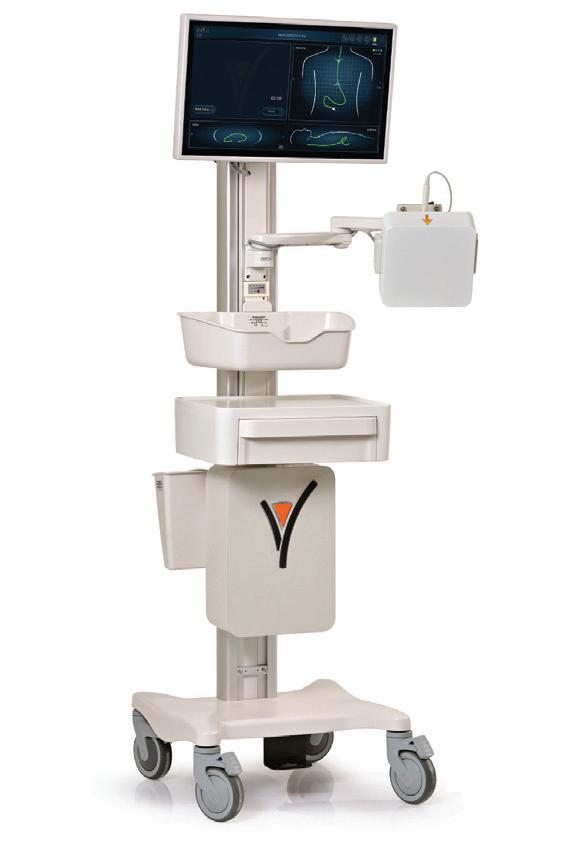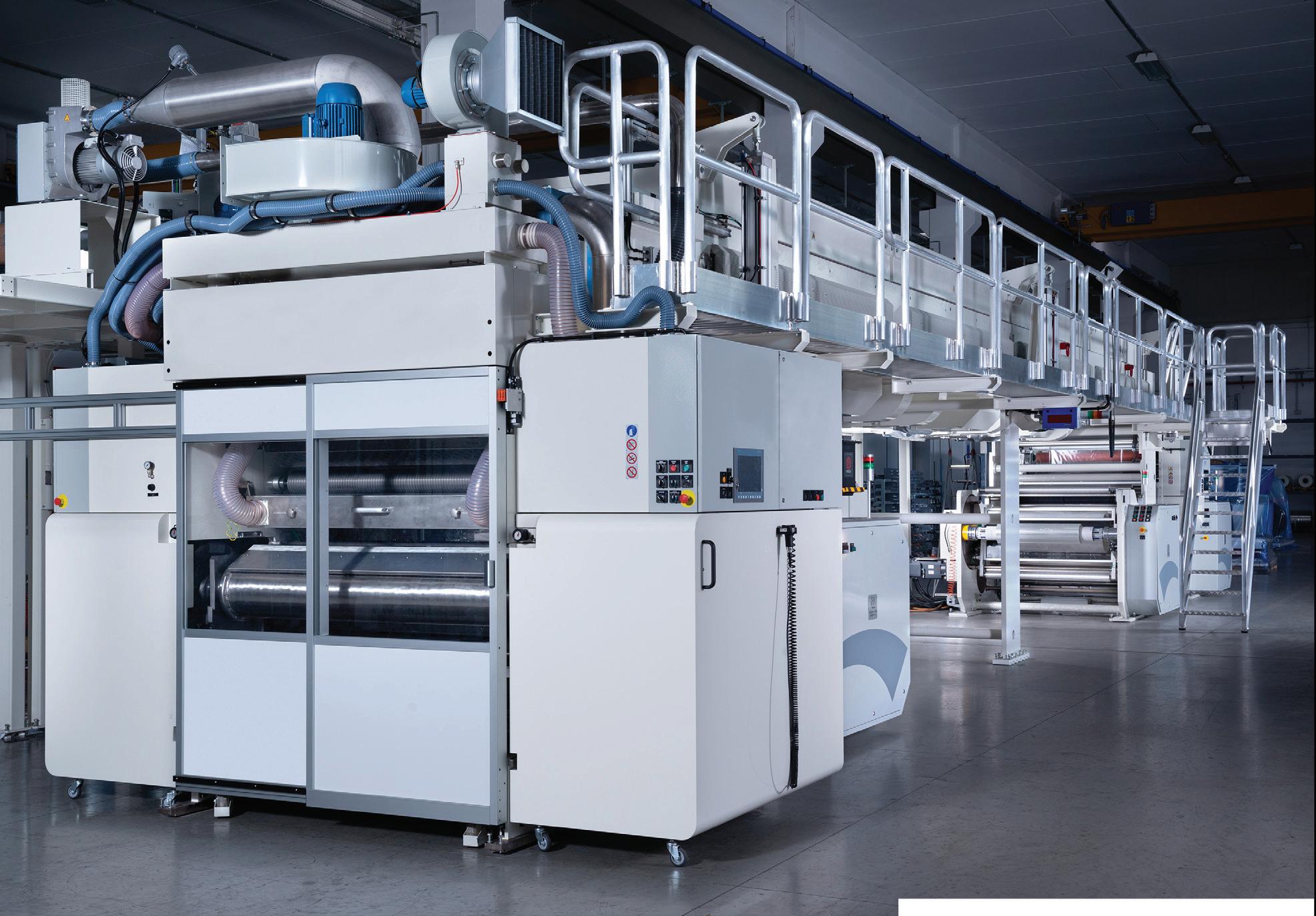
5 minute read
Drug delivery: The X factor
from MPN NA Issue 17
by MPN Magazine
DEVELOPING A SMART MEDICAL DEVICE IS A TASK THAT LIES SOMEWHERE BETWEEN COMPLICATED AND COMPLEX. STRICT REGULATIONS AND MULTILAYERED REQUIREMENTS NECESSITATE AN ARRAY OF SKILLS FROM PRODUCT DESIGN TO MANUFACTURING AND PROCESSING TO RISK MANAGEMENT. PEIK-CHRISTIAN WITTE, HEAD OF ENGINEERING & INNOVATION, SANNER GMBH, EXPLAINS HOW TO DEVELOP INTELLIGENT PRODUCTS WITH DESIGN FOR EXCELLENCE.
THE X FACTOR
Smart medical devices with certain functions such as reminders or dosage can increase therapy adherence. Products range from intelligent tablet dispensers to retrofittable add-ons for inhalers or injection systems.
Numerous factors feed into the development and subsequent production of such products. Each factor has a different emphasis depending on the complexity and design of the device. In Design for Excellence (DfX), the X stands for a variable that makes a development successful only in optimal interaction with the others (Figure 1).
DESIGN FOR PRODUCT
Requirements management already plays an important role in the initial development phase. Based on numerous customer requirements, product designers should develop concepts that incorporate functionality, manufacturability and costs — also for subsequent series production — and physically convert the results in CAD (computer-aided design) models.
Figure 1: According to the Design for Excellence (DfX) strategy, only the optimal interaction with numerous other variables will lead to success.
DESIGN FOR USABILITY
User-friendliness and ergonomics make decisive contributions to the correct use and acceptance of the smart medical device, which ultimately improves the therapeutic success. Particular attention must therefore be paid to usability with the aim of minimizing risks from application errors, ensuring patient safety, and creating the framework conditions for the highest possible level of adherence.
DESIGN FOR MANUFACTURING
The product must be optimally designed at an early stage regarding the planned manufacturing and assembly conditions, quality, and costs. Particularly in the case of plastic components, product and process development must go hand in hand, hence material selection, tooling and injection molding technology, the lowest possible number of components and functional integration are considered.
DESIGN FOR ASSEMBLY
The product design, including product structure, is optimized with regard to assembly. The assembly concept (that is, a partially versus a fully automated process) depends on the number of parts to be assembled.
DESIGN TO COST
An optimum cost–benefit ratio and low follow-up and modification costs are also relevant. Considerations include the optimum use of materials, the lowest possible number of components, and optimizing manufacturing process cycle times. As electronic components for smart medical devices can also boost manufacturing costs, these too warrant detailed analysis.
DESIGN FOR PATIENT SAFETY
Patient protection, patient well-being and patient benefits are important issues in the development, production and application of smart medical
devices. Adverse outcomes or harm from healthcare interventions must be avoided, prevented and/or improved; for example, by ensuring the device is used correctly through sensors that indicate incorrect handling.
DESIGN FOR RISK MITIGATION
To ensure patient safety, risk management in accordance with ISO 14971 is a key element in the development of smart medical devices. Manufacturers must ensure that their products are safe when used properly and eliminate or minimize the risk of error from handling the product.
DESIGN FOR QUALITY
Process reliability and speed play major roles in developing and implementing inspection concepts. Precise, often fully automated, error detection is essential. Today, it can be implemented almost in real time via video assistance systems integrated into the production process. These systems compare the actual results with the specifications from the CAQ (computer-aided quality assurance) system.
DESIGN FOR REGULATORY REQUIREMENTS
Smart medical devices are usually categorized as ‘active medical devices’ and are subject to the same strict documentation requirements as all other medical devices. These include risk analysis and risk assessment to prove the safety and performance of a clinical evaluation, as well as comprehensive quality management, especially when using electronic assemblies.
BEST PRACTICE 1: MOUTHPIECE FOR INHALER
A mouthpiece for a measuring device to determine inflammatory activity in chronic respiratory diseases shows how the aspects of Design for Excellence interact: Product and Usability Design ensure high functionality and ease of use; Design for Manufacturing and Assembly defined the multistage assembly line, including filling, welding, and packaging (Figure 2).
The main challenges in assembly were how to feed the various parts and filling media in a way that would be gentle on the product, to meter them accurately to 1/100 of a gram, and to position and weld components and filter materials in the correct position and fit. The result is multistage, precise, and fast assembly with high reproducibility and quality.
In addition, a fully automated, software-supported 100% inspection of each work step ensures quality control: 15 camera systems inspect presence, correct execution and completeness, and, at the same time, six weighing stations check the adequate quantity. This combination eliminates subsequent testing on the finished assembled part, which conserves resources and saves time and costs.
BEST PRACTICE 2: ADD-ON DEVICE FOR INHALER
Another example is an add-on device for a DPI (dry powder inhaler [Figure 3]). First, the development team had to answer the following: where and how can we position and attach the electronic components to ensure their functionality and to make the assemblies reproducible for large quantities?
The position of the sensors is crucial: for example, one of the sensors ensures the vibration characteristics are optimally transmitted during the inhalation process. This avoids overdosage or under-dosage and helps maintain both usability and patient safety. The exact position of the sensor also prevents impairments that could arise from the user’s grip.
Special attention must also be paid to a flexible tolerance compensation and to the simplest possible tool geometries for fixing the sensor boards, which minimize subsequent cycle times. A pre-assembled battery with holder, which is placed in the bottom of the add-on, facilitates the assembly steps and cabling.
DESIGN FOR RECYCLING
In the case of installed electronic components, environmental aspects such as disposal, recycling, retrofitting and rechargeability play a central role in development. Recycling considerations maximize the proportion of recoverable and recyclable materials; they also help to develop products that facilitate the dismantling and recovery of recyclable materials.
MANY YEARS OF EXPERIENCE
As the two best practice examples show, smart medical devices must be designed to make them ready for series production. These multilayered requirements can only be met by a team of engineers, project and quality managers, as well as compliance experts that precisely coordinate all process steps in Design for Excellence and works together flexibly.

Figure 2: Complexity in a nutshell: the injection-molded mouthpiece for inhalers is filled with different media and components in several stations.
Figure 3: Add-on devices for DPIs illustrate the challenges of developing intelligent medical devices.









